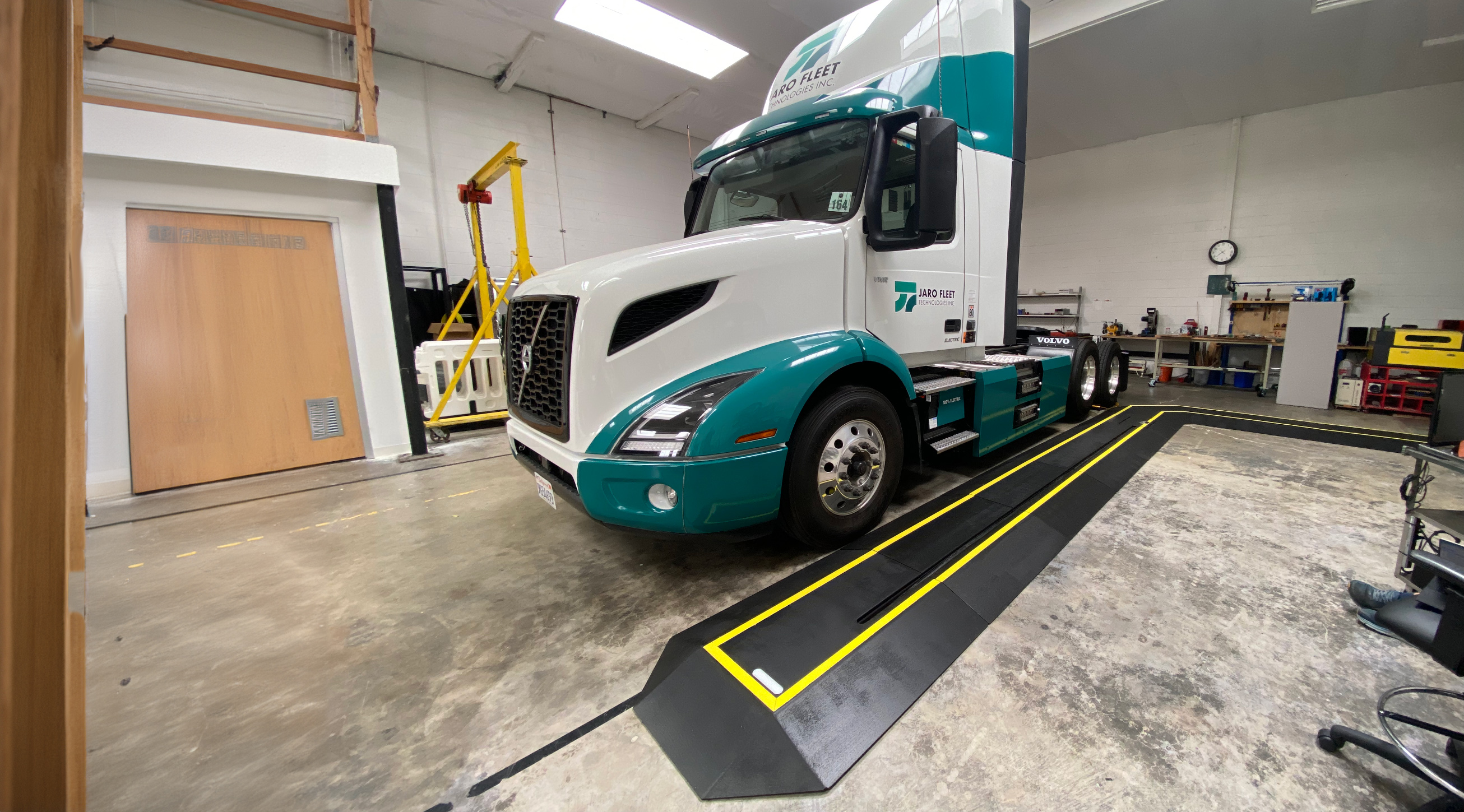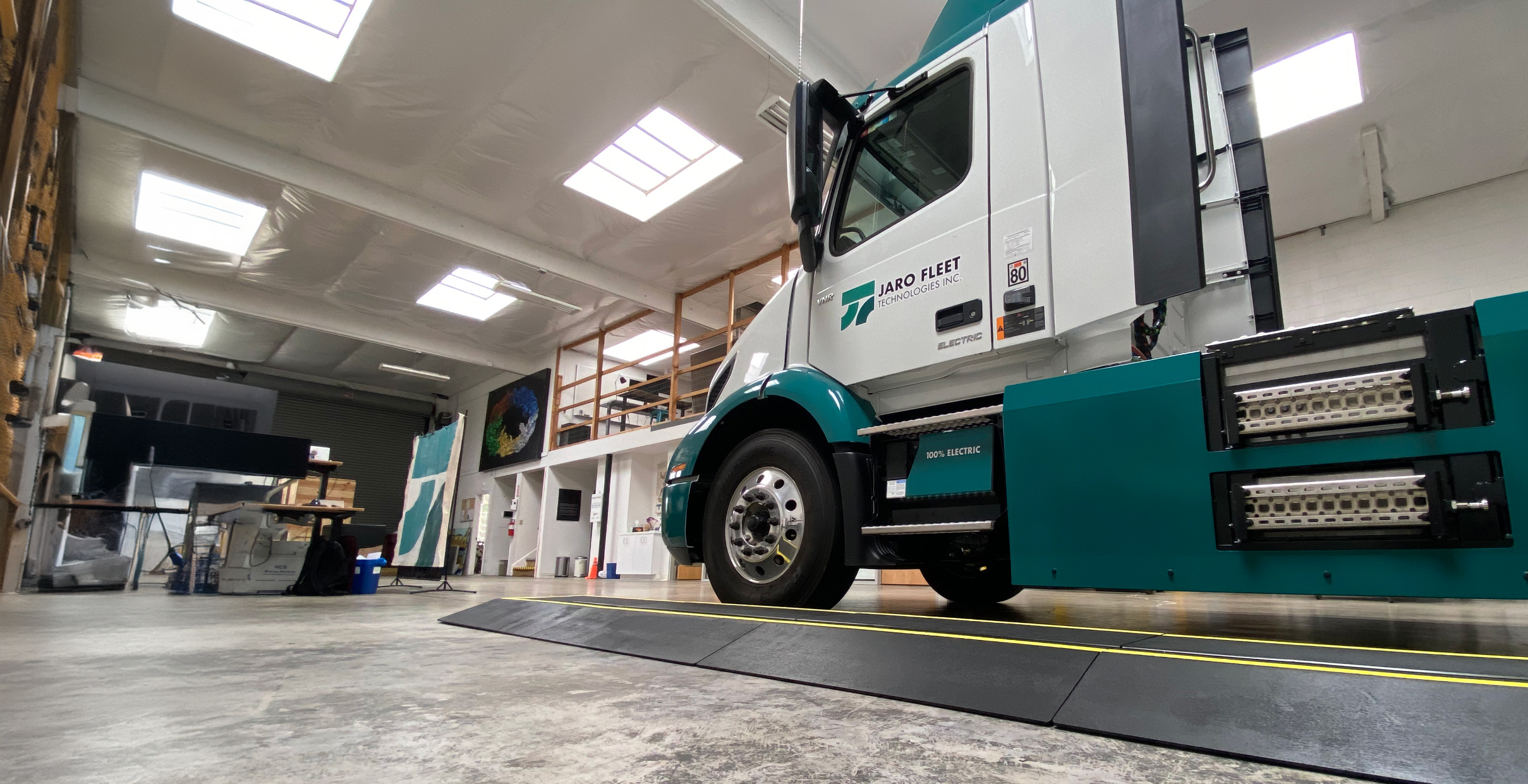Driving the Costs out of Electric Big Rigs:Enormous Opportunities Beyond Major ObstaclesBy Joe Miler, PhD, CEO and Founder of Jaro Fleet Technologies
The challenge doesn’t get any bigger, but neither does the reward. Electrification of trucks represents one of the most critical but daunting market opportunities in decades. Let's look at the numbers. While 2.5M truck drivers and another 3M professionals collaborate to move 70% of US goods with unbelievable speed and reliability, their trucks also generate enormous amounts of emissions. About 5% of all US greenhouse gas emissions come from semi-trucks, which is 22x the emissions of the passenger car sector on a per vehicle basis. It’s unusual to find any one industry generating so much greenhouse gas emissions, and it puts the industry in the crosshairs of environmental regulation and new electrification business strategies, while it’s still on the hook to keep domestic supply chains humming at ever increasing speeds.
Jaro Fleet Technologies, or Jaro, has been in this industry since 2019. Our founder came from the electric car industry with the goal of providing new cost-reduction technologies to the fleets pioneering the use of electric trucks. We’ve been fortunate to work with incredible thought leaders from across the industry including one prominent fleet we’ve partnered closely with. Our relationships with fleet managers, drivers, and executives led us to develop an industry-first charger that is purpose-built for this industry’s specific use cases. We kept it in stealth until now because we wanted to enable fleets to test and shape its features to their liking, and they did. As you can see, Jaro’s flat, conductive high-power charger looks nothing like the incumbent, gas-station style chargers that are common across our industry.

Jaro’s industry-first FreightPower HDEV charging system: an ultra-high power charger installed 100%-above-ground, weatherproofed, and with 4” ground clearance.
The charger’s patented all-above-ground design enables extremely low installation-cost and reduced installation-time, the low profile enables it to be sited anywhere in a truck yard without risk of vehicle collision, and our 500kW+ power rating provides quick 15-30 min charging operations, approximately 2-3X faster than most incumbent chargers. We built both autonomous and manual versions for different use cases. Our team of experienced engineers and hardware executives were running full speed to deploy this technology when we began to recognize some important obstacles. We thought we were ready to unlock cost-effective and practical electric semi-trucking, but we were wrong.
Other challenges, enormous in scope, are delaying the industry. Leading industry players often cite the lack of public charging infrastructure and limited vehicle range as the most immediate problems, but there are much deeper problems too. There are long delays for utility connections (3-5 years in some cases), enormous capex costs for infrastructure, hidden electricity opex costs, and myriad operational issues arising from the different capabilities of electric trucks.

Secondary viewpoint of Jaro’s industry-first FreightPower HDEV charging system showing 4” ground clearance.
There are also important structural challenges in the industry. No industry segment really owns the challenges that come from electrification, and nobody is sufficiently incentivized to solve them. Regulators are putting pressure on the industry, but neither the OEMs, the fleets, the charging providers, or the shippers see a path to meeting these regulations without destroying their existing businesses in the process. This leaves most players uneasy as they take small steps to participate – but avoid overinvesting – in the transition to electric.
Rather than turn away from this challenging landscape, Jaro has relied on its industry relationships to find a bigger purpose within it. As a technology startup in a well-established industry, we know we need to play our role. Our role is to think big, innovate, and bring in new technical expertise while working in partnership with existing players. In this spirit, we aim to bring an incredibly innovative approach to the problem existing players are ill-positioned to resolve: costs at scale.
Through extensive industry conversations, technology evaluation and simulation, and McKinsey-style cost roadmapping, we have identified the seeds of what we believe are a truly scalable electric semi-trucking business. While the details are still confidential, the fundamentals are rather apparent. We seek to use wholesale electricity, which is 20X cheaper than diesel on a per-mile basis, to power an electric truck fleet in an entirely unexpected way. We believe we can hit $1.00/mile when electric trucks hit mass production pricing (about $160k per truck), and we aim to prove it.

Jaro’s Automated FreightPower HDEV charging system prototype with 6” ground clearance, 20,000lb load capacity, and 4’x4’x3’ under-truck operating envelope.
We know we won’t be able to do this alone. We’ll need to work with players from across the industry that share our vision for a world in which electric beats diesel head-to-head on the metric customers care most about: dollar per mile. We foresee a transition to electric driven by economics, not regulation, and a transition faster than anybody would predict today. We know there are numerous obstacles ahead, but with the right fundamentals, the right relationships, and a market opportunity this big, we believe there’s a very meaningful business to build. And we’re not shy about sharing the upside, as we know this pie is plenty big to share with the right shippers, carriers, charging companies, and industry partners.
As we build our solution, please keep an eye out for our announcements so you can assess our progress for yourself. We will share data-rich evidence of our cost performance with industry partners and we’ll share product updates more broadly. Should we fail to meet our ambitious goals, we aim to share our technical and cost learnings publicly to propel the next generation of innovators ahead. This is a once in a lifetime industry transformation, and we’d prefer to be known for helping rather than hindering the transition.
As we take on the big challenges that lie ahead to build this business, we look to the industry itself for inspiration, particularly the hardworking drivers and fleet operators who take on other peoples’ problems day-in and day-out to make sure the goods arrive on time. Their approval, feedback, and suggestions mean the world to us, and we strive to achieve their level of grit and grounded, no-BS service. We believe that’s the mindset we need if we’re going to survive the wild journey ahead.
